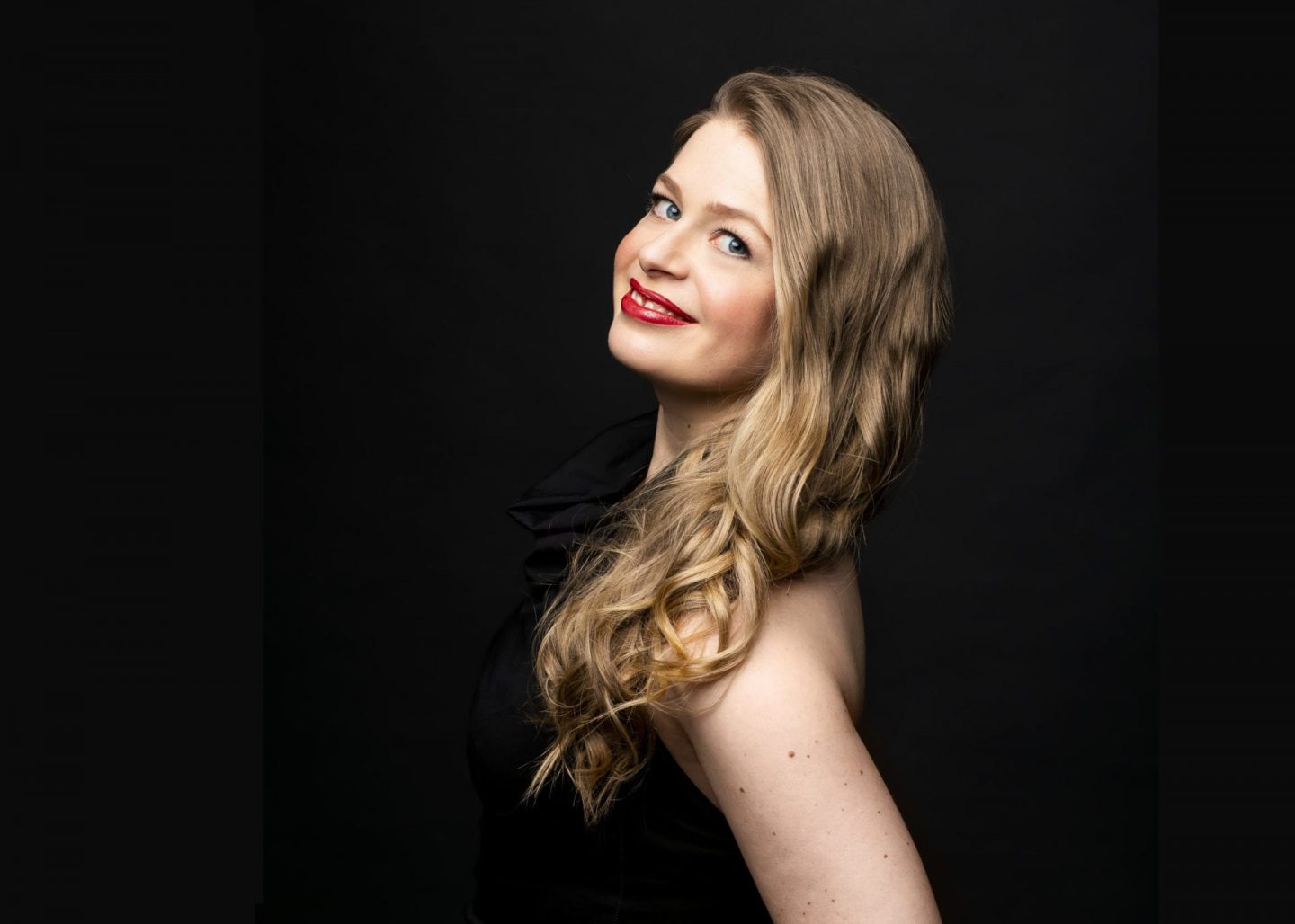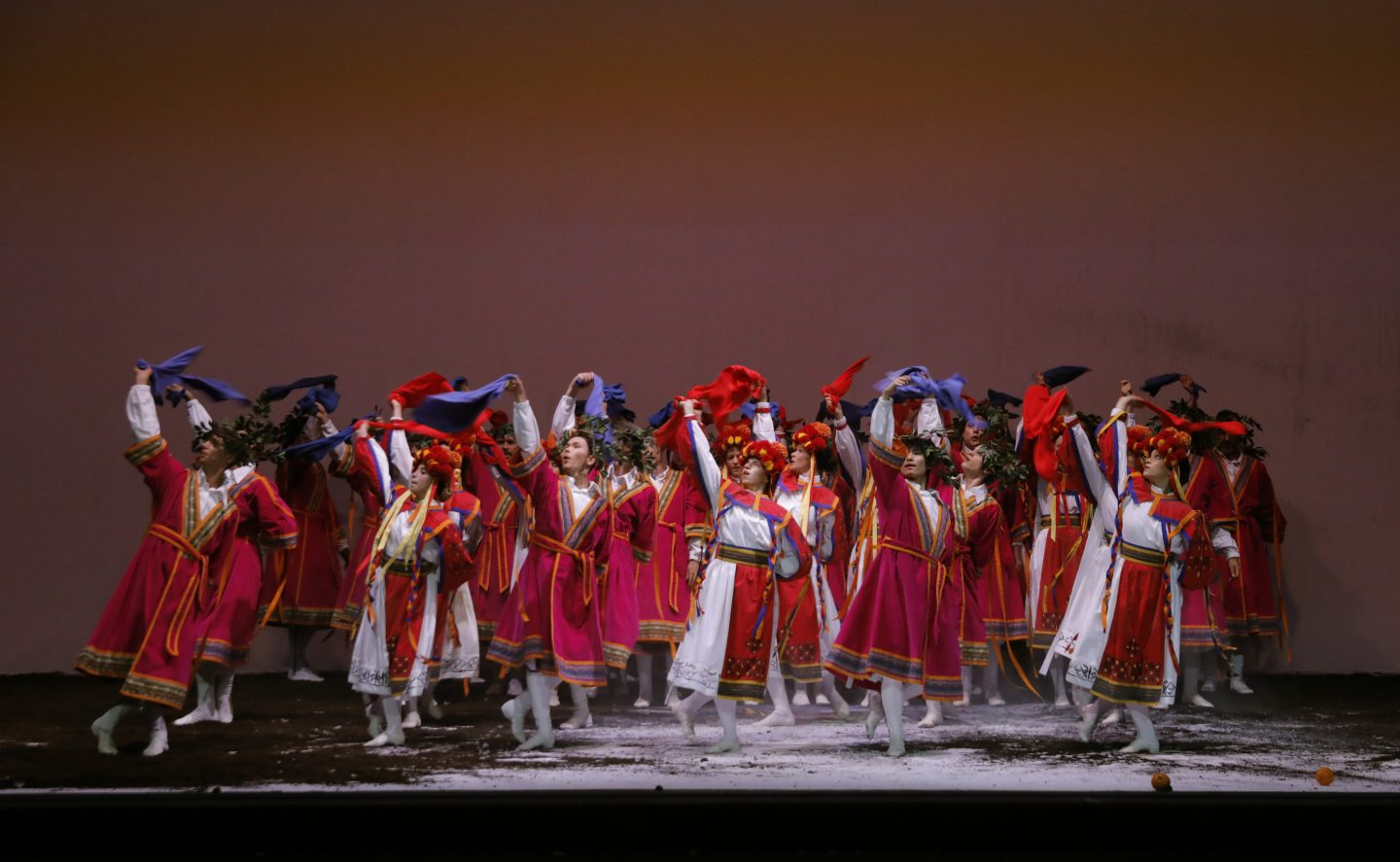One of the major topics of interest about this year’s Adelaide Festival
is what renowned Italian theatre director Romeo Castellucci will come up with
in his staged version of Mozart’s Requiem. Known as a radical in the
theatre world, and having fairly stunned audiences in two preceding Adelaide
Festivals with Giulio Cesare (2000) and Go Down, Moses (2016), his
conception of this 18th
century masterwork
is sure to be provocatively different. One person who knows all about it is
rising Australian opera star Siobhan Stagg. She sang in the premiere of Requiem
at the Festival d’Aix-en-Provence last July, and the Mildura-born soprano
is again in the cast when it opens in Adelaide in February.
It is no surprise, incidentally, that Stagg was
handpicked for Requiem. Berlin-based and for seven years a young artist
for Deutsche Oper, Stagg has been gaining strong international praise for her
Mozart, particularly for her signature role of Pamina in Magic Flute,
which she has performed in Salzburg, Berlin, Opera de Limoges and twice at
Covent Garden. Stagg is an admired recitalist too, so her concert of songs by
Poulenc, Debussy and Messiaen at Ukaria will also be of much interest come
March.
First though to Castellucci’s transformation of
Mozart’s Requiem. This is not the first time the work has been staged –
other danced or semi-danced versions have been attempted by Sweden’s Malmö
Opera (2019), France’s Insula Orchestra (2018), Poland’s Opera Wrocławska
(2016) and Canada’s Toronto Symphony Orchestra (2016). However, in its
interpretative layers that address species extinction, human catastrophe and
the promise of rebirth, this conception is without parallel in its breadth.
Castellucci’s Requiem literally becomes a work of global significance.
 Siobhan Stagg
Siobhan Stagg
Stagg says it makes us reflect not only on our
individual lives but humanity’s destiny and the future of our planet.
“I do think the theme of mortality is universal
and that it is applicable all through the generations. These ideas are
particularly poignant at the moment with the bushfire tragedy in Australia that
we are facing. In Europe, they are really struck by what has happened and the
loss of species through wildfires.”
During rehearsals at Aix-en-Provence, Castellucci worked on a number of staging ideas to gauge their effectiveness. “We had to try out a variety of props and he decided which worked best,” explains Stagg.
“One was a scene involving a car crash.
Sometimes we feel our lives are metaphorically like car crashes. The work is
experimental in a way that expresses all these kinds of human and natural
tragedies. The cast obviously had no idea about the impending bushfires in
Australia when we did it in France, but what Castellucci has conceived is so
applicable to any situation.”
In Mozart’s day, a requiem was written for
standard liturgical use or to honour the passing of a notable personage.
However, the work we know today as the Requiem in D minor, K. 626, was left
unfinished at the time of the composer’s own death in 1791. The mysterious
circumstances in which he composed it – after having supposedly been visited by
a secret messenger – have prompted endless conjecture ever since. The general
scholarly view now is that Requiem was commissioned by Count Franz von
Walsegg, a Viennese musical amateur at the time, following the sudden passing
of his young wife earlier in the same year.
Perhaps in response to this background,
Castellucci also presents us with questions of what it is like to bear grief.
“He makes us think about death but also about
the ones who are left behind and who are still living,” says Stagg. “His
staging reflects life moving in a backwards trajectory and loosely it tells of
a person’s life in retrospect. First we see a lady lying dead in what could be
a TV docudrama scene, then we trace her steps back through to babyhood and her
first visions of life.
 Requiem
Requiem
“We are encouraged to reflect on the whole
cycle of life. At the back wall are projections of species of animals that have
become extinct along with lost cultural monuments and human calamities through
history. By the end it becomes philosophical.”
As to what we can expect it to look like on stage, Stagg says Requiem is accompanied throughout by dance, albeit in the broadest sense of that word. Members of the Australian Dance Theatre will be present, but in fact all four soloists plus a 36-member chorus will contribute to the staging via physical movement.
“A lot of the
dance is done by the choristers,” Stagg explains. “In the original rehearsals,
we didn’t realise we’d have to dance such a lot, but the expectation was not
actually professional dancing. Dance in this case is ritualistic and signifies
the coming together of people. We’re not doing perfect arabesques or anything –
it is more about involving the whole body, not dance in the traditional sense.”
The stage itself
also serves as a canvas for storytelling. Pristinely white to begin with, it
becomes heavily layered with an impasto of narrative.
“Scene by scene,
paint and dirt, ash and honey are gradually added,” Stagg says. “All these
elements are strewn across the stage during the performance, and each night it
turns out differently. When we did it in Provence for the premiere it caused
quite a stir. Some will think that Mozart’s Requiem
doesn’t need any form of staging, and
I understand that. But people were surprised to find so much more in this
staged version than they expected.”
Another striking difference about this interpretation of
Mozart’s Requiem is how much extra music it contains. Thanks to the
input of musical collaborator Raphaël Picho, the Süssmayr edition that they
started with is significantly expanded with Gregorian plainchant and additional
music of Mozart spliced into the score.
This
further intensifies Requiem’s complexity as a stage work, believes
Stagg. A touching moment, she says, comes when a young boy soprano sings the
opening Kyrie from Mozart’s C Minor Mass in a simple, pure vocalisation – “It
totally stole the audience’s hearts in Aix-en-Provence.”
Joining
Stagg in Adelaide are the same cast members who sang in France: alto Sara
Mingardo, tenor Martin Mitterrutzner and bass Luca Tittoto. Prominent UK
conductor Rory Macdonald leads the Adelaide Symphony Orchestra over the four
nights – he has appeared once before with the ASO in Elgar’s Enigma
Variations in 2013.
For
those heading up to Ukaria at Festival time, another reward lies in wait when
Stagg presents her all-French recital with pianist Timothy Young. Nested within
Marshall McGuire’s Composer & Citizen: Chamber Landscapes series, her
program explores different facets of amore up close and personal. She says she
is particularly looking forward to trying it out in Ukaria’s acclaimed concert
hall.
“I love singing in French and am doing a lot at the moment,” she says. “Messiaen wrote his Poèmes pour Mi for his first wife and it is typical of the composer in its birdsong influences and irregular rhythms. They are wonderfully intricate. Debussy’s Ariettes oubliées have been with me for 12 years, and I recorded them last year in Berlin with Noga Quartet. Poulenc’s Fiançailles pour rire are about love but in a way that you might describe as either facetious and comical or really serious. The delight is that one never quite knows which – he is indeed a very intelligent clown.”
28 February – 4 March
Adelaide Festival:
Requiem
Get the latest from The Adelaide Review in your inbox
Get the latest from The Adelaide Review in your inbox